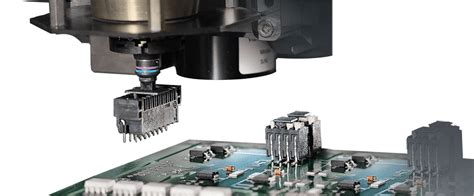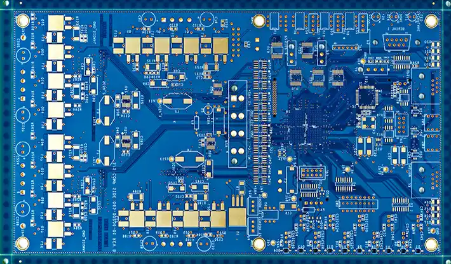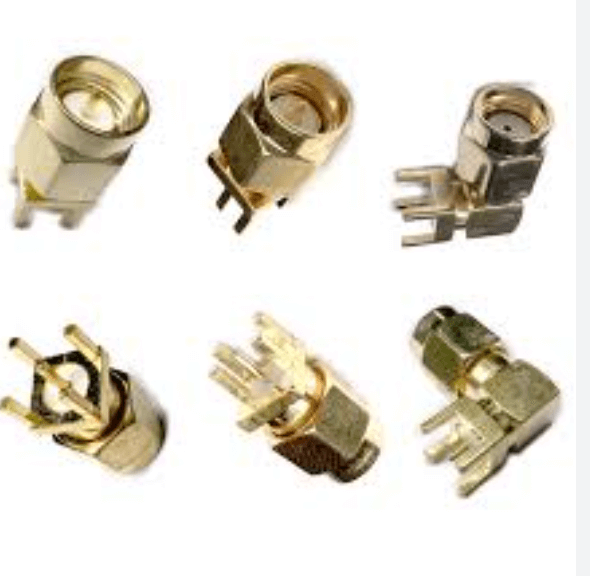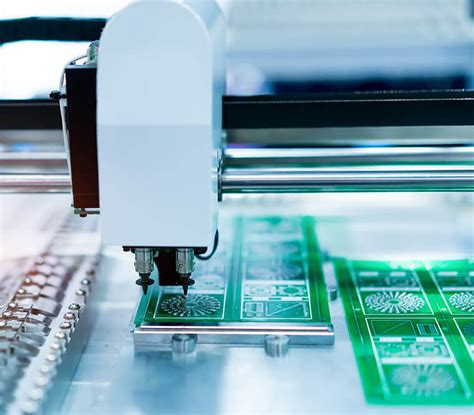DBC Ceramic: A Comprehensive Overview of Direct Bonded Copper Technology
Introduction
Direct Bonded Copper (DBC) ceramic substrates are a critical component in modern electronics, particularly in high-power and high-temperature applications. DBC technology involves bonding a layer of copper directly onto a ceramic substrate, typically alumina (Al₂O₃) or aluminum nitride (AlN), to create a robust and thermally efficient material. This combination of materials provides excellent electrical insulation, thermal conductivity, and mechanical strength, making DBC ceramics ideal for use in power electronics, automotive systems, renewable energy, and more. This article delves into the principles, manufacturing process, properties, applications, and future trends of DBC ceramics, offering a comprehensive understanding of this advanced material.
1. Understanding DBC Ceramics
DBC ceramics are composite materials consisting of a ceramic substrate with one or both sides bonded to a layer of copper. The ceramic substrate provides electrical insulation and thermal stability, while the copper layer offers excellent electrical conductivity and heat dissipation. The direct bonding process creates a strong, reliable interface between the ceramic and copper, enabling the material to withstand high temperatures, mechanical stress, and harsh environments.
1.1 Key Components
- Ceramic Substrate: The most commonly used ceramics in DBC technology are alumina (Al₂O₃) and aluminum nitride (AlN). Alumina is widely used due to its cost-effectiveness and good thermal properties, while AlN is preferred for applications requiring higher thermal conductivity.
- Copper Layer: The copper layer is typically between 0.1 mm and 0.6 mm thick and is bonded to the ceramic substrate using a high-temperature oxidation process.
1.2 Advantages of DBC Ceramics
- High Thermal Conductivity: DBC ceramics efficiently dissipate heat, making them suitable for high-power applications.
- Electrical Insulation: The ceramic substrate provides excellent electrical insulation, preventing short circuits and ensuring reliable performance.
- Mechanical Strength: The direct bonding process creates a strong interface, enabling the material to withstand mechanical stress and thermal cycling.
- Thermal Stability: DBC ceramics can operate at high temperatures without degrading, making them ideal for harsh environments.

2. Manufacturing Process of DBC Ceramics
The production of DBC ceramics involves several precise and controlled steps to ensure the quality and performance of the final product.
2.1 Surface Preparation
The ceramic substrate is cleaned and polished to remove any impurities or surface irregularities. This step is crucial for achieving a strong bond between the ceramic and copper.
2.2 Oxidation
The copper foil is oxidized to form a thin layer of copper oxide (Cu₂O) on its surface. This oxide layer is essential for the bonding process, as it reacts with the ceramic substrate at high temperatures.
2.3 Bonding
The oxidized copper foil is placed on the ceramic substrate, and the assembly is heated to a temperature between 1065°C and 1083°C in a controlled atmosphere. At this temperature, the copper oxide reacts with the ceramic to form a eutectic liquid phase, which solidifies upon cooling to create a strong bond.
2.4 Etching and Patterning
After bonding, the copper layer is etched to create the desired circuit patterns. This step involves applying a photoresist, exposing it to UV light through a mask, and then chemically etching away the unwanted copper.
2.5 Quality Control
The final DBC substrate undergoes rigorous testing to ensure it meets the required specifications for thermal conductivity, electrical insulation, and mechanical strength.
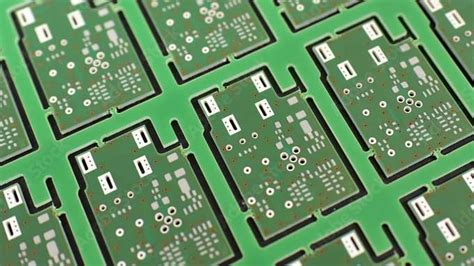
3. Properties of DBC Ceramics
DBC ceramics exhibit a unique combination of properties that make them suitable for demanding applications.
3.1 Thermal Conductivity
The thermal conductivity of DBC ceramics depends on the type of ceramic substrate used. Alumina has a thermal conductivity of around 24-28 W/m·K, while aluminum nitride offers a much higher thermal conductivity of 150-180 W/m·K. This makes AlN-based DBC ceramics ideal for applications requiring efficient heat dissipation.
3.2 Electrical Insulation
The ceramic substrate provides excellent electrical insulation, with a dielectric strength of up to 20 kV/mm for alumina and 15 kV/mm for aluminum nitride. This ensures reliable performance in high-voltage applications.
3.3 Mechanical Strength
DBC ceramics have high mechanical strength, with a flexural strength of around 300-400 MPa for alumina and 350-450 MPa for aluminum nitride. This enables them to withstand mechanical stress and thermal cycling.
3.4 Thermal Expansion
The thermal expansion coefficient of DBC ceramics is closely matched to that of silicon, making them compatible with semiconductor devices. This reduces the risk of thermal stress and failure in electronic assemblies.
4. Applications of DBC Ceramics
DBC ceramics are used in a wide range of industries and applications, thanks to their unique properties.
4.1 Power Electronics
DBC ceramics are widely used in power electronic devices such as insulated gate bipolar transistors (IGBTs), power modules, and voltage regulators. Their high thermal conductivity and electrical insulation make them ideal for dissipating heat and ensuring reliable performance in high-power applications.
4.2 Automotive
In the automotive industry, DBC ceramics are used in electric vehicles (EVs) and hybrid electric vehicles (HEVs) for power inverters, motor drives, and battery management systems. Their ability to operate at high temperatures and withstand thermal cycling makes them suitable for the demanding conditions of automotive applications.
4.3 Renewable Energy
DBC ceramics are used in renewable energy systems such as solar inverters and wind turbines. Their high thermal conductivity and electrical insulation ensure efficient power conversion and reliable operation in harsh environments.
4.4 Aerospace and Defense
In aerospace and defense applications, DBC ceramics are used in radar systems, communication equipment, and power supplies. Their thermal stability and mechanical strength make them ideal for use in extreme conditions.
4.5 Industrial Electronics
DBC ceramics are used in industrial electronics for motor drives, power supplies, and control systems. Their ability to dissipate heat and provide electrical insulation ensures reliable performance in industrial environments.
5. Challenges and Limitations
Despite their many advantages, DBC ceramics face several challenges and limitations.
5.1 Cost
The manufacturing process for DBC ceramics is complex and requires specialized equipment, which can increase the cost of the final product. Aluminum nitride-based DBC ceramics, in particular, are more expensive than alumina-based ones.
5.2 Brittleness
Ceramics are inherently brittle and can be prone to cracking under mechanical stress. This limits their use in applications where impact resistance is critical.
5.3 Thermal Mismatch
Although the thermal expansion coefficient of DBC ceramics is closely matched to that of silicon, there can still be a mismatch with other materials used in electronic assemblies. This can lead to thermal stress and potential failure.
5.4 Manufacturing Complexity
The precise control required during the bonding and etching processes makes the manufacturing of DBC ceramics complex and time-consuming.
6. Future Trends and Innovations
The field of DBC ceramics is continuously evolving, driven by advancements in materials science and manufacturing technologies.
6.1 Development of New Ceramic Materials
Researchers are exploring new ceramic materials with improved thermal and mechanical properties. For example, silicon carbide (SiC) and beryllium oxide (BeO) are being investigated as potential alternatives to alumina and aluminum nitride.
6.2 Advanced Bonding Techniques
New bonding techniques, such as low-temperature bonding and laser-assisted bonding, are being developed to improve the quality and reliability of DBC ceramics.
6.3 Additive Manufacturing
Additive manufacturing (3D printing) is being explored as a method for creating complex DBC ceramic components with integrated circuit patterns. This approach offers greater design flexibility and reduces material waste.
6.4 Integration with Semiconductor Devices
The integration of DBC ceramics with advanced semiconductor devices, such as gallium nitride (GaN) and silicon carbide (SiC) power devices, is expected to drive innovation in power electronics.
Conclusion
DBC ceramics are a vital material in modern electronics, offering a unique combination of thermal conductivity, electrical insulation, and mechanical strength. Their applications span a wide range of industries, from power electronics and automotive systems to renewable energy and aerospace. Despite the challenges associated with their cost, brittleness, and manufacturing complexity, ongoing research and development are driving innovations that promise to enhance the performance and expand the applications of DBC ceramics. As the demand for high-power, high-temperature electronic systems continues to grow, DBC ceramics will play an increasingly important role in enabling the technologies of the future. By addressing the challenges and leveraging emerging technologies, manufacturers can unlock the full potential of DBC ceramics, driving progress in science and industry.




